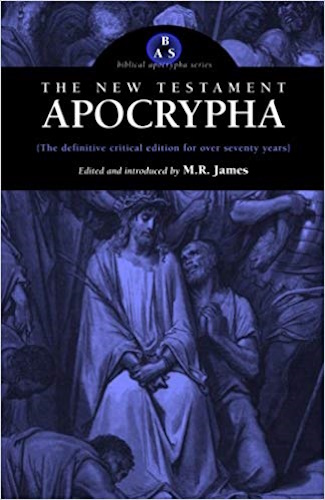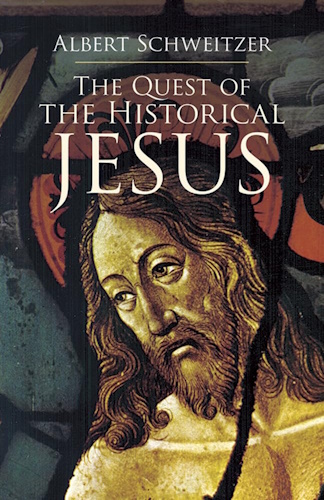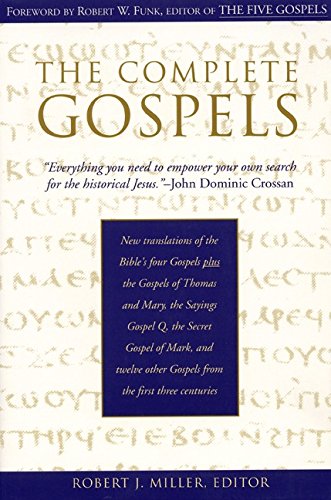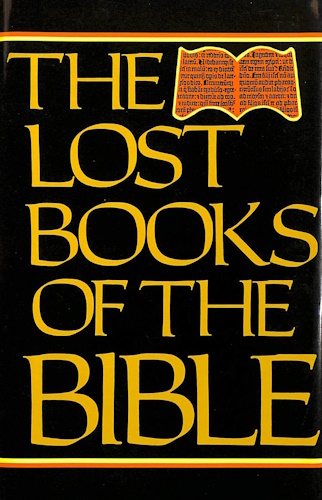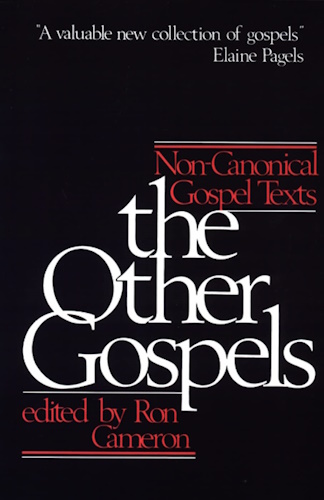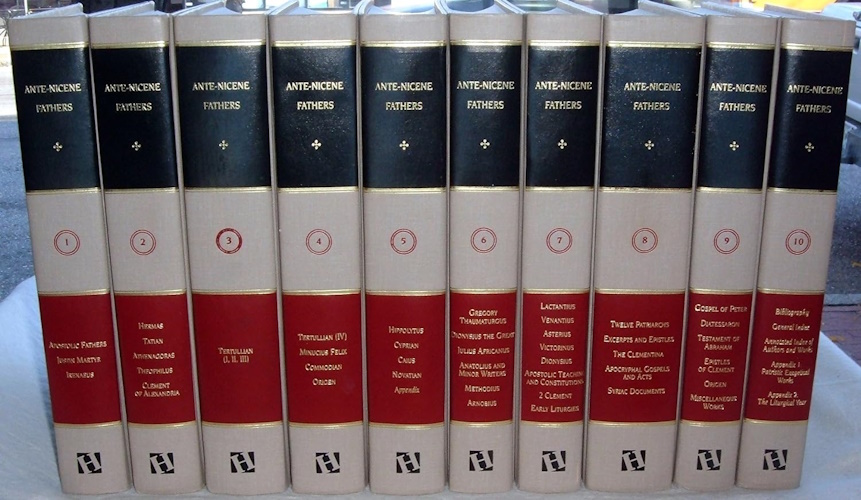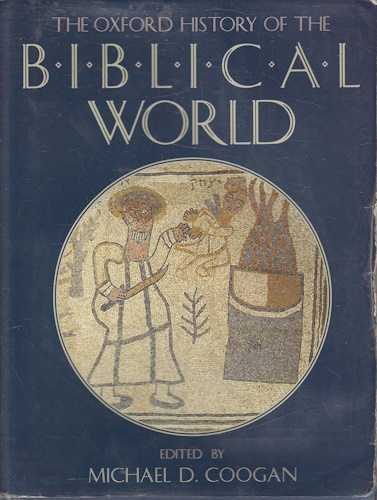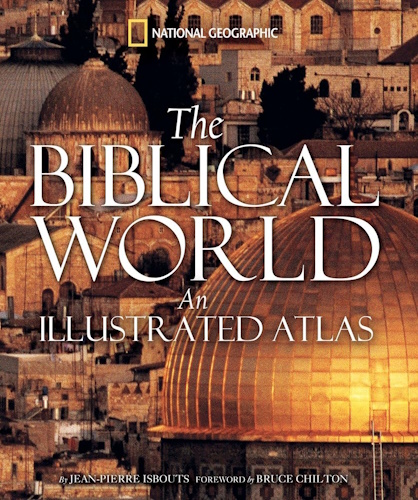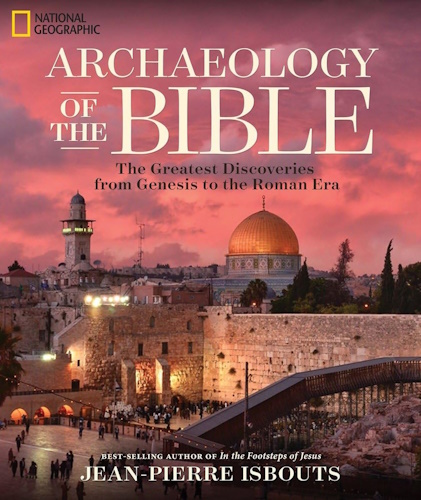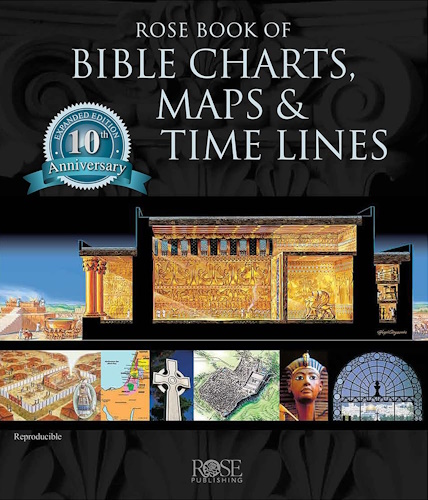
The Apocalypse of Peter
INTRODUCTION TO THE REVELATION OF PETER.
The fragment here translated was discovered in 1880 by the French Archaeological Mission in an ancient burying place at Akhmim in Upper Egypt. It was published at Paris in 1892 (Bouriant, Mèmoires publiès par les membres de la Mission Archèologique Francaise au Caire, T. ix., fasc. 1, 1892). The ms. is now in the Gizeh Museum and has been held to be of a date between the eighth and twelfth centuries. Until the discovery of the fragment, the following was all that was known about the Revelation of Peter.
1. The so-called Muratorian Fragment, a list of sacred writings, first published by Muratori in 1740, and found by him in a seventh or eighth century ms. belonging to the Ambrosian Library in Milan, but which had previously belonged to the Columban Monastery of Bobbio, is assigned on internal evidence to the third quarter of the second century. (Vide Westcott, Canon of the N. T., p. 514.) At line 60 it says: "the Apocalypses also of John and Peter only do we receive, which (latter) some among us would not have read in church."
2. Clement of Alexandria (fl. c. 200 a.d.) in his Hypotoposes, according to the testimony of Eusebius, H. E., vi., 14, gave "abridged accounts of all the canonical Scriptures, not even omitting those that are disputed, I mean the book of Jude and the other general epistles. Also the Epistle of Barnabas and that called the Revelation of Peter." Also in his Eclogoe Propheticae, chapters 41, 48 and 49, he gives three, or as some think, four quotations from the Revelation of Peter, mentioning it twice by name.
3. The Catalogue Claromontanus, an Eastern list of Holy Scriptures, belonging to the third century, gives at the end the Revelation of Peter (v. Westcott, Canon, p. 55). This catalogue gives the length of the various books it enumerates measured in stichoi. Our book is said to have two hundred and seventy, which makes it rather longer than the Epistle to the Colossians which has two hundred and fifty-one.
4. Methodius, bishop of Olympus in Lycia in the beginning of the fourth century, in his Symposium, ii., 6, says, "wherefore we have also learned from divinely inspired Scriptures that untimely births even if they are the offspring of adultery are delivered to caretaking angels." Though Peter is not here mentioned, the purport of the passage is the same as that of one of the quotations given by Clement of Alexandria.
5. Eusebius (_ c. 339 a.d.), in his Ecclesiastical History, iii., 25, expressly mentions the Revelation of Peter along with the Acts of Paul and the Pastor as spurious books, while at iii., 3, he says: "as to that which is called the Preaching and that called the Apocalypse of Peter, we know nothing of their being handed down as Catholic writings. Since neither among the ancients nor among the ecclesiastical writers of our own day, has there been anyone that has appealed to testimony taken from them."
6. Macarius Magnes (beginning of fifth century) in his Apocritica,, iv., 6 quotes as from a heathen opponent of Christianity the following: "Let us by way of superfluity cite also that saying in the Apocalypse of Peter. It thus introduces the heaven as being about to undergo judgment along with the earth. `The earth, 'it says, `shall present all men before God at the day of judgment, being itself also to be judged along with the heaven also which encompasses it.'" And at iv., 16, he examines this passage again, naming the revelation of Peter, and supporting the doctrine of the passage by the authority of prophecy (Isaiah 34:4) and the Gospel (Matthew 24:85).
7. Sozomen (middle of fifth century), H. E., vii., 19, says: "For instance, the so-called Apocalypse of Peter which was esteemed as entirely spurious by the ancients, we have discovered to be read in certain churches of Palestine up to the present day, once a, year, on the day of preparation, during which the people most religiously fast in commemoration of the Saviour's Passion" (i.e., on Good Friday). It is to be noted that Sozomen himself belonged to Palestine.
8. In the list of the Sixty Books which is assigned to the fifth or sixth century the Revelation of Peter is mentioned among the Apocrypha (v. Westcott, Canon, p. 551).
9. The so-called Stichometry of Nicephorus, a list of scriptures with notes of their extent, ascribed to Nicephorus, Patriarch of Constantinople, 806-814 a.d., includes the Revelation of Peter among theantilegomena or disputed writings of the New Testament, and gives it three hundred stichoi or thirty more than the above-mentioned Catalogus Claromontanas.
10. The Armenian annalist Mkhitan (thirteenth century) in a list of the New Testament antilegomena mentions the Revelation of Peter, after the Gospel of Thomas and before the Periodoi Pauli, and remarks that he has himself copied these books. (Cf. Harnack, Geschichte der altchristlichen Literatur.)
Up till lately these facts represented all that was positively known of the Revelation of Peter. From them we gather that it must have been written before the middle of the second. century (so as to be known at Rome and included in the Muratorian Canon), that it had a wide circulation, that it was for some time very popular, so that it would appear to have run a considerable chance of achieving a place in the canon, but that it was ultimately rejected and in the long run dropped out of knowledge altogether. But even previously to the discovery at AkhméÆm, the general character of the book had been inferred from the scanty fragments preserved in ancient writers and from the common elements contained in other and later apocalyptic writings which seemed to require some such book as the Revelation of Peter as their ultimate source. Such writings are the (Christian) Apocalypse of Esdras, the Vision of Paul, the Passion of S. Perpetua and the visions contained in the History of Barlaam and Josaphat. (Cf. Robinson,Texts and Studies, i., 2, p. 37-43, and Robinson and James, The Gospel according to Peter and the Revelation of Peter, 1892.)
The Revelation of Peter affords the earliest embodiment in Christian literature of those pictorial presentations of heaven and hell which have exercised so widespread and enduring an influence. It has, in its imagery, little or no kinship with the Book of Daniel, the Book of Enoch, or the Revelation of S. John. Its only parallels in canonical scripture, with the notable exception of the Second Epistle of Peter, are to be found in Isaiah lxvi., 24, Mark ix., 44, 48, and the parable of Dives and Lazarus in Luke xvi., 19. It is indeed Judaic in the severity of its morality and even in its phraseology (cf. the frequent use of the word righteous, and the idea that God and not Christ will come to judge sinners). Rut the true parallels for, if not the sources of, its imagery of the rewards and punishments which await men after death are to be found in Greek beliefs which have left their traces in such passages as the Vision of Er at the end of Plato's Republic.
The heaven of the Petrine Apocalypse is akin to the Elysian Fields and the Islands of the Blest. In it the saints are crowned as with flowers and beautiful of countenance, singing songs of praise in the fragrant air, in a land all lighted up with the light of the sun. We are reminded of "the Elysian Fields and the world's end where is Rhadamanthus of the fair hair, where life is easiest for men. No snow is there, nor yet great storm, nor any rain; but alway Ocean sendeth forth the breeze of the shrill West to blow cool on men" (Odyssey, iv., 568), and of the garden of the gods on Olympus, which "is not shaken by winds, or ever wet with rain, nor doth the snow come nigh thereto, but most clear air is spread about it cloudless, and the white light floats over it" (Odyssey, vi., 43, Butcher and Lang's transl.). Perhaps the most striking parallel of all is afforded by the fragment of a dirge of Pindar: "For them shineth below the strength of the sun, while in our world it is night, and the space of crimson-flowered meadow before their city is full of the shade of frankincense trees, and of fruits of gold. And some in horses, and in bodily feats, and some in dice, and. some in harp-playing have delight; and. among them thriveth all fair-flowering bliss; and fragrance streameth ever through the lovely land, as they mingle incense of every kind upon the altars of the gods" (Pindar, E. Myer's transl., p. 116). Beside this heaven the New Jerusalem of the canonical Apocalypse is austere. Rut it is the spiritual city. "For the city had no need of the sun, neither of the moon to shine on it, for the Lord God Almighty and the Lamb were in the midst of it and the Lamb was the light thereof."
So likewise in the case of the torments of the wicked as presented in the Revelation of Peter. We are not here in the Jewish Sheol, or among the fires of the valley of Hinnom, so much as among the tortures of Tartarus and the boiling mud of the Acherusian Lake (cf. Plato, Phaedo, p. 113; Aristophanes, Frogs, line 145), or where "wild men of fiery aspect... seized and. carried off several of them, and Ardiaeus and others, they bound head and foot and hand, and threw them down and flayed them with scourges, and dragged them along the road at the side, carding them on thorns like wool, and declaring to the passers-by what were their crimes, and that they were being taken away to be cast into hell" (Republic, x., p. 616, Jowett's transl.). It is not surprising that in later visions of the same kind the very names of the Greek under-world are ascribed to localities of hell. It is across the river Oceanus. It is called Tartarus, In it is the Acherusian Lake. Notice in this connection that the souls of innocent victims are present along with their murderers to accuse them.
The Revelation of Peter shows remarkable kinship in ideas with the Second Epistle of Peter. The parallels will be noted in the margin of the translation. It also presents notable parallels to the Sibylline Oracles (cf. Orac. Sib., ii., 225 sqq.), while its influence has been conjectured, almost with certainty, in the Acts of Perpetua and. the visions narrated in the Acts of Thomas and the History of Barlaam and Josaphat. It certainly was one of the sources from which the writer of the Vision of Paul drew. And directly or indirectly it may be regarded as the parent of all the mediaeval visions of the other world.
The fragment begins in the middle of an eschatological discourse of Jesus, probably represented as delivered after the resurrection, for verse 5 implies that the disciples had begun to preach the Gospel. It ends abruptly in the course of a catalogue of sinners in hell and their punishments. The fragments preserved in the writings of Clement of Alexandria and Methodius probably belonged to the lost end of the book; that preserved by Macarius Magnes may have belonged to the eschatological discourse at the beginning. Taking the length of the whole at from two hundred and seventy to three hundred stichoi, the Akhmim fragment contains about the half.
The present translation is made from Harnack's edition of the text, 2d ed., Leipzig, 1893.
There is another and later Apocalypse of Peter in Arabic, of which mss. exist in Rome and Oxford. It is called the Apocalypse of Peter, or the narrative of things revealed to him by Jesus Christ which had taken place from the beginning of the world and which shall take place till the end of the world or the second coming of Christ. The book is said to have been written by Clement, to whom Peter had communicated the secrets revealed to him. The writer himself calls the book Librum Perfectionis or Librum Completum. Judging from the analysis of its contents quoted by Tischendorf (Apocalypses Apocr.) it has no connection with the present work.
The Apocalypse of Peter
1. ... many of them will be false prophets, and will teach divers ways and doctrines of perdition: but these will become sons of perdition. 3. And then God will come unto my faithful ones who hunger and thirst and are afflicted and purify their souls in this life; and he will judge the sons of lawlessness.
4. And furthermore the Lord said: Let us go into the mountain: Let us pray. 5. And going with him, we, the twelve disciples, begged that he would show us one of our brethren, the righteous who are gone forth out of the world, in order that we might see of what manner of form they are, and having taken courage, might also encourage the men who hear us.
6. And as we prayed, suddenly there appeared two men standing before the Lord towards the East, on whom we were not able to look; 7, for there came forth from their countenance a ray as of the sun, and their raiment was shining, such as eye of man never saw; for no mouth is able to express or heart to conceive the glory with which they were endued, and the beauty of their appearance. 8. And as we looked upon them, we were astounded; for their bodies were whiter than any snow and ruddier than any rose; 9, and the red thereof was mingled with the white, and I am utterly unable to express their beauty; 10, for their hair was curly and bright and seemly both on their face and shoulders, as it were a wreath woven of spikenard and divers-coloured flowers, or like a rainbow in the sky, such was their seemliness.
11. Seeing therefore their beauty we became astounded at them, since they appeared suddenly. 12. And I approached the Lord and said: Who are these? 13. He saith to me: These are your brethren the righteous, whose forms ye desired to see. 14. And I said to him: And where are all the righteous ones and what is the aeon in which they are and have this glory?
15. And the Lord showed me a very great country outside of this world, exceeding bright with light, and the air there lighted with the rays of the sun, and the earth itself blooming with unfading flowers and full of spices and plants, fair-flowering and incorruptible and bearing blessed fruit. 16. And so great was the perfume that it was borne thence even unto us. 17. And the dwellers in that place were clad in the raiment of shining angels and their raiment was like unto their country; and angels hovered about them there. 18. And the glory of the dwellers there was equal, and with one voice they sang praises alternately to the Lord God, rejoicing in that place. 19. The Lord saith to us: This is the place of your high-priests, the righteous men.
20. And over against that place I saw another, squalid, and it was the place of punishment; and those who were punished there and the punishing angels had their raiment dark like the air of the place.
21. And there were certain there hanging by the tongue: and these were the blasphemers of the way of righteousness; and under them lay fire, burning and punishing them.
22. And there was a great lake, full of flaming mire, in which were certain men that pervert righteousness, and tormenting angels afflicted them.
23. And there were also others, women, hanged by their hair over that mire that bubbled up: and these were they who adorned themselves for adultery; and the men who mingled with them in the defilement of adultery, were hanging by the feet and their heads in that mire. And I said: I did not believe that I should come into this place.
24. And I saw the murderers and those who conspired with them, cast into a certain strait place, full of evil snakes, and smitten by those beasts, and thus turning to and fro in that punishment; and worms, as it were clouds of darkness, afflicted them. And the souls of the murdered stood and looked upon the punishment of those murderers and said: O God, thy judgment is just.
25. And near that place I saw another strait place into which the gore and the filth of those who were being punished ran down and became there as it were a lake: and there sat women having the gore up to their necks, and over against them sat many children who were born to them out of due time, crying; and there came forth from them sparks of fire and smote the women in the eyes: and these were the accursed who conceived and caused abortion.
26. And other men and women were burning up to the middle and were cast into a dark place and were beaten by evil spirits, and their inwards were eaten by restless worms: and these were they who persecuted the righteous and delivered them up.
27. And near those there were again women and men gnawing their own lips, and being punished and receiving a red-hot iron in their eyes: and these were they who blasphemed and slandered the way of righteousness.
28. And over against these again other men and women gnawing their tongues and having flaming fire in their mouths: and these were the false witnesses.
29. And in a certain other place there were pebbles sharper than swords or any spit, red-hot, and women and men in tattered and filthy raiment rolled about on them in punishment: and these were the rich who trusted in their riches and had no pity for orphans and widows, and despised the commandment of God.
30. And in another great lake, full of pitch and blood and mire bubbling up, there stood men and women up to their knees: and these were the usurers and those who take interest on interest.
31. And other men and women were being hurled down from a great cliff and reached the bottom, and again were driven by those who were set over them to climb up upon the cliff, and thence were hurled down again, and had no rest from this punishment: and these were they who defiled their bodies acting as women; and the women who were with them were those who lay with one another as a man with a woman.
32. And alongside of that cliff there was a place full of much fire, and there stood men who with their own hands had made for themselves carven images instead of God. And alongside of these were other men and women, having rods and striking each other and never ceasing from such punishment.
33. And others again near them, women and men, burning and turning themselves and roasting: and these were they that leaving the way of God.
Fragments of the Apocalypse of Peter.
1. Clemens Alexandrinus, Eclog. 48. For instance, Peter in the Apocalypse says that the children who are born out of due time shall be of the better part: and that these are delivered over to a care-taking angel that they may attain a share of knowledge and gain the better abode [after suffering what they would have suffered if they had been in the body: but the others shall merely obtain salvation as injured beings to whom mercy is shown, and remain without punishment, receiving this as a reward].
2. Clem. Alex. Eclog. 49. But the milk of the women running down from their breasts and congealing shall engender small flesh eating beasts: and these run up upon them and devour them.
3. Macarius Magnes, Apocritica iv., 6 cf. 16. The earth, it (sc. the Apoc. of Peter) says, "shall present all men before God at the day of judgment, being itself also to be judged, with the heaven also which encompasses it."
4. Clem. Alex. Eclog. 41. The scripture says that infants that have been exposed are delivered to a care-taking angel, by whom they are educated and so grow up, and they will be, it says, as the faithful of a hundred years old are here.
5. Methodius, Conviv. ii., 6. Whence also we have received in divinely-inspired scriptures that untimely births are delivered to care-taking angels, even if they are the offspring of adultery.
![]()
![]()
-
Urantia Book, 44:0.11 - The Celestial Artisans
Never in your long ascendancy will you lose the power to recognize your associates of former existences. Always, as you ascend inward in the scale of life, will you retain the ability to recognize and fraternize with the fellow beings of your previous and lower levels of experience. Each new translation or resurrection will add one more group of spirit beings to your vision range without in the least depriving you of the ability to recognize your friends and fellows of former estates.
-
Princess Bride 1987 Wallace Shawn (Vizzini) and Mandy Patinkin (Inigo Montoya)
Vizzini: HE DIDN'T FALL? INCONCEIVABLE.
Inigo Montoya: You keep using that word. I do not think it means what you think it means. -
Urantia Book, 117:4.14 - The Finite God
And here is mystery: The more closely man approaches God through love, the greater the reality -- actuality -- of that man. The more man withdraws from God, the more nearly he approaches nonreality -- cessation of existence. When man consecrates his will to the doing of the Father's will, when man gives God all that he has, then does God make that man more than he is.
-
Urantia Book, 167:7.4 - The Talk About Angels
"And do you not remember that I said to you once before that, if you had your spiritual eyes anointed, you would then see the heavens opened and behold the angels of God ascending and descending? It is by the ministry of the angels that one world may be kept in touch with other worlds, for have I not repeatedly told you that I have other sheep not of this fold?"
-
Urantia Book, Foreword - 0:12.12 - The Trinities
But we know that there dwells within the human mind a fragment of God, and that there sojourns with the human soul the Spirit of Truth; and we further know that these spirit forces conspire to enable material man to grasp the reality of spiritual values and to comprehend the philosophy of universe meanings. But even more certainly we know that these spirits of the Divine Presence are able to assist man in the spiritual appropriation of all truth contributory to the enhancement of the ever-progressing reality of personal religious experience—God-consciousness.
-
Urantia Book, 1:4.3 - The Mystery Of God
When you are through down here, when your course has been run in temporary form on earth, when your trial trip in the flesh is finished, when the dust that composes the mortal tabernacle "returns to the earth whence it came"; then, it is revealed, the indwelling "Spirit shall return to God who gave it." There sojourns within each moral being of this planet a fragment of God, a part and parcel of divinity. It is not yet yours by right of possession, but it is designedly intended to be one with you if you survive the mortal existence.
-
Urantia Book, 1:4.1 - The Mystery Of God
And the greatest of all the unfathomable mysteries of God is the phenomenon of the divine indwelling of mortal minds. The manner in which the Universal Father sojourns with the creatures of time is the most profound of all universe mysteries; the divine presence in the mind of man is the mystery of mysteries.
-
Urantia Book, 1:4.6 - The Mystery Of God
To every spirit being and to every mortal creature in every sphere and on every world of the universe of universes, the Universal Father reveals all of his gracious and divine self that can be discerned or comprehended by such spirit beings and by such mortal creatures. God is no respecter of persons, either spiritual or material. The divine presence which any child of the universe enjoys at any given moment is limited only by the capacity of such a creature to receive and to discern the spirit actualities of the supermaterial world.
-
Urantia Book, 11:0.1 - The Eternal Isle Of Paradise
Paradise is the eternal center of the universe of universes and the abiding place of the Universal Father, the Eternal Son, the Infinite Spirit, and their divine co-ordinates and associates. This central Isle is the most gigantic organized body of cosmic reality in all the master universe. Paradise is a material sphere as well as a spiritual abode. All of the intelligent creation of the Universal Father is domiciled on material abodes; hence must the absolute controlling center also be material, literal. And again it should be reiterated that spirit things and spiritual beings are real.
-
Urantia Book, 50:6.4 - Planetary Culture
Culture presupposes quality of mind; culture cannot be enhanced unless mind is elevated. Superior intellect will seek a noble culture and find some way to attain such a goal. Inferior minds will spurn the highest culture even when presented to them ready-made.
-
Urantia Book, 54:1.6 - True And False Liberty
True liberty is the associate of genuine self-respect; false liberty is the consort of self-admiration. True liberty is the fruit of self-control; false liberty, the assumption of self-assertion. Self-control leads to altruistic service; self-admiration tends towards the exploitation of others for the selfish aggrandizement of such a mistaken individual as is willing to sacrifice righteous attainment for the sake of possessing unjust power over his fellow beings.
-
Urantia Book, 54:1.9 - True And False Liberty
How dare the self-willed creature encroach upon the rights of his fellows in the name of personal liberty when the Supreme Rulers of the universe stand back in merciful respect for these prerogatives of will and potentials of personality! No being, in the exercise of his supposed personal liberty, has a right to deprive any other being of those privileges of existence conferred by the Creators and duly respected by all their loyal associates, subordinates, and subjects.
-
Urantia Book, 54:1.8 - True And False Liberty
There is no error greater than that species of self-deception which leads intelligent beings to crave the exercise of power over other beings for the purpose of depriving these persons of their natural liberties. The golden rule of human fairness cries out against all such fraud, unfairness, selfishness, and unrighteousness.
